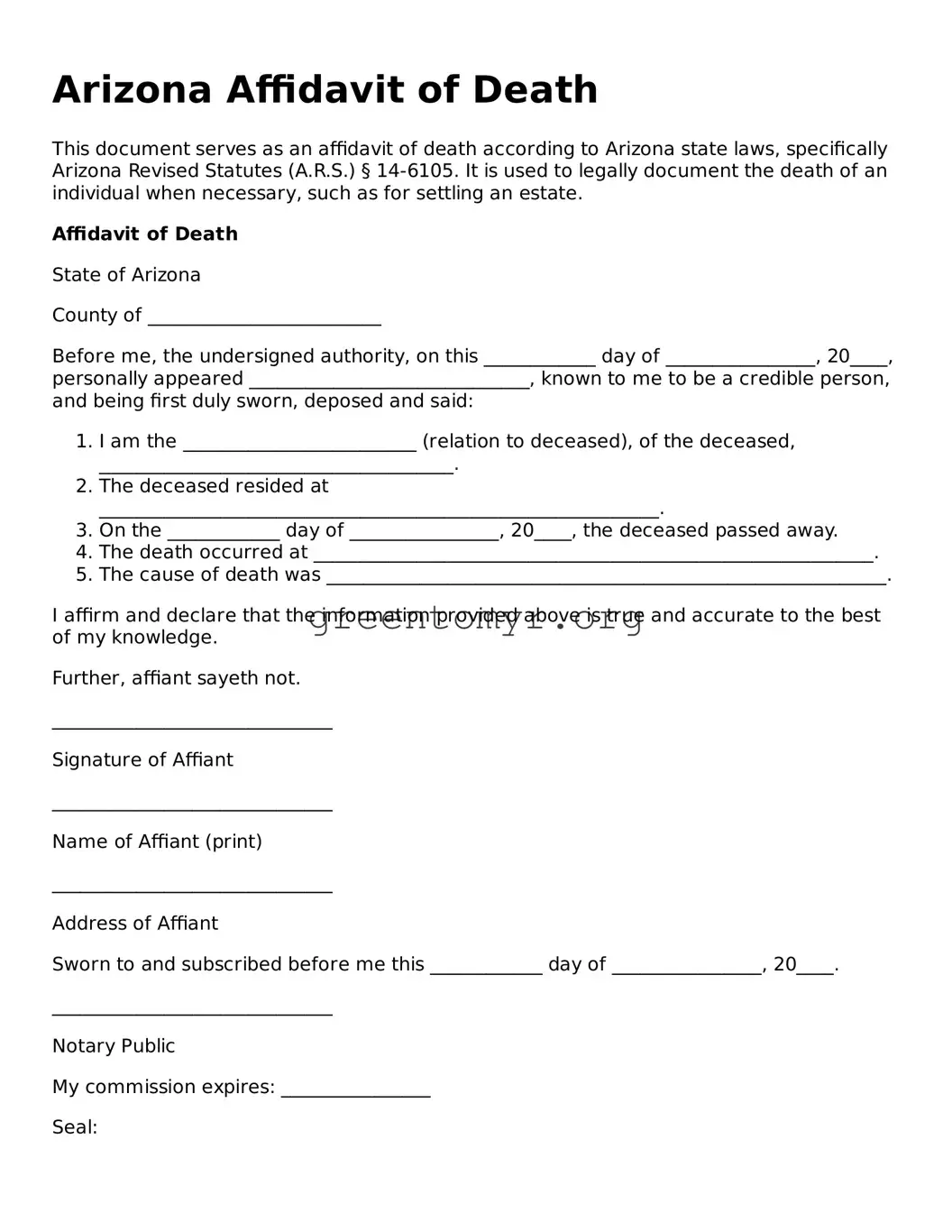Arizona Affidavit of Death
This document serves as an affidavit of death according to Arizona state laws, specifically Arizona Revised Statutes (A.R.S.) § 14-6105. It is used to legally document the death of an individual when necessary, such as for settling an estate.
Affidavit of Death
State of Arizona
County of _________________________
Before me, the undersigned authority, on this ____________ day of ________________, 20____, personally appeared ______________________________, known to me to be a credible person, and being first duly sworn, deposed and said:
- I am the _________________________ (relation to deceased), of the deceased, ______________________________________.
- The deceased resided at ____________________________________________________________.
- On the ____________ day of ________________, 20____, the deceased passed away.
- The death occurred at ____________________________________________________________.
- The cause of death was ____________________________________________________________.
I affirm and declare that the information provided above is true and accurate to the best of my knowledge.
Further, affiant sayeth not.
______________________________
Signature of Affiant
______________________________
Name of Affiant (print)
______________________________
Address of Affiant
Sworn to and subscribed before me this ____________ day of ________________, 20____.
______________________________
Notary Public
My commission expires: ________________
Seal:
